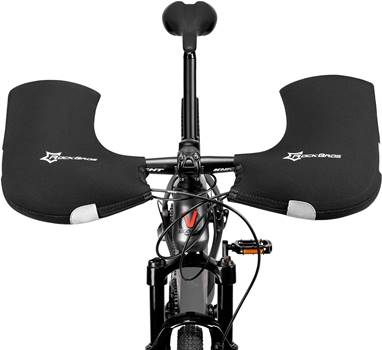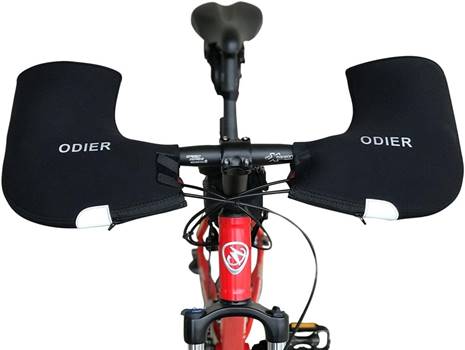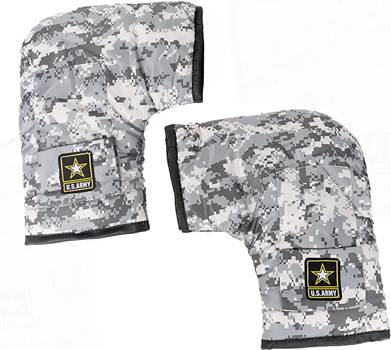Protecting your body is the most vital thing during winter cycling; there’s simply no way around to ride as often as possible. So, why don’t you prepare yourself for the extreme temperatures instead of worrying about them?
Starting with skull caps and drysuits is undoubtedly a great idea, but for many cyclists, it’s their hands that become the limiting factor. Protecting your hands is just as important as safeguarding the rest of your body.
So, let’s explore how you can protect your hands with pogies while cycling, starting with what pogies are used for and then moving towards features, tips to choose the right pogies, and many more.
What are Pogies for Cycling?
Cycling pogies are a kind of hand cover that cyclists use to keep their hands warm in the winter, allowing them to easily handle their bikes. Riders can simply slide their hands in and out of pogies since they attach straight to the handlebars and create a shield over the controls.
What are Pogies Used For?
Bicycle pogies, sometimes known as hand “pocket-gloves,” are a new addition to a rider’s toolkit. These are the hand covers that provide attachment to the handlebars. Thus, they provide a windproof and insulated layer for the cyclist’s hands.
In comparison to the traditional gloves, these modern pogies keep a rider’s hands warm and provide easy access to handlebar controls. Some riders even install bike bells inside their pogies to make sure that they are functional in cold weather.
| Fact About Pogies for Biking: Did you know that the Pogies can help you biking in extreme cold temperatures between 0°C and -30°C (32°F and -22°F), when ordinary winter gloves might not be adequate? |
What are the Features of Winter Cycling Pogies?
Based on my experience, modern winter cycling pogies highlight these key features:
- An outer shell that provides resistance to wind, rain, and cold weather.
- A thin layer of synthetic material or down insulation. The light windproof layer handles most of the work and acts as an insulation layer.
- The design of pogies provides complete and total freedom to use your levers, shifters, and grips.
- Ease of use is the hallmark of pogies. You can easily slide your hands in and out of them because of their open design. It makes pogies ideal for quick turns or grabbing a snack.
Best Bike Pogies for Winter Biking
As an enthusiast, I understand the importance of choosing the right pair for riding needs. The right pogies can make a significant difference in comfort and performance during cold weather rides. Below is a table summarizing some of the best pogies available in the market:
| Pogies | Features | Uses |
| 45NRTH Cobrafists | Easy access, temperature vents, spacious design | Commuting and recreational rides |
| Dogwood Designs Pogies | Simple design, easy to remove, versatile | Daily commuting |
| Revelate Designs Expedition | Durable, warm, designed for long trips | Extreme conditions and expeditions |
| Bar Mitts | Effective insulation, fits various handlebar types | General winter riding |
Here is the useful information you should not skip, so stay with me to learn about the factors to consider before buying cycling pogies.
How to Choose the Right Pogies for Cycling?
Before selecting pogies for cycling, it is crucial to compile a list of the features that you want. Individual taste matters when it comes to choosing the cyclist pogies.
In addition to personal preference, what else do you need to check?
I have listed below some important factors before choosing the pogies for your winter cycling.
- Material: Search for durable, premium quality and weather-resistant fabrics.
- Size: Choose a size that matches your bike’s handlebars and controls.
- Convenience: Look for the pogies that provide easy access to handlebar controls.
- Insulation: First decide the warmth level and then choose pogies accordingly.
Now, the wait is over. Let’s have a look at some best bike pogies, that you can easily buy online.
Best Bike Pogies For You in the Market
Here, based on my experience and research, I’ve listed the best bike pogies available online. So, have a look at them, and buy the best pogies for winter biking that suit best to your needs and preferences.
- ROCKBROS Bicycle Pogies
- ODIER Bike Handlebar Mitts Cyclist Pogies
- MoGee Muffs Bike Pogies
1. ROCKBROS Bicycle Pogies
These are designed with a 6mm thick Neoprene surface material that offers resistance to wind, cold and water in extreme cold weather. These pogies for bikes are very easy to use and can be installed without any tools. These best bike pogies feature a fastener tape that assists in attaching these pogies to the bike handlebars without moving and loosing. Click here to see the latest price.
Pros:
- Durable material.
- Super easy to use and install.
- Excellent windproof, coldproof and water resistant.
- Multifunctional, suitable for mountain bikes, E-Bikes, fat bikes, and commuter bikes.
Cons:
- Not suitable for ~0°F.
- Limited size capacity.
2. ODIER Bike Handlebar Mitts Cyclist Pogies
The ODIER Bike Handlebar Cyclist pogies are designed with 5 mm SBR material that helps in providing warmth and water resistance. These best mountain bike pogies are waterproof but avoid soaking them in water as they will dry very slowly. The design is reflective thus can be helpful in night cycling. Click here to see the latest price.
Pros:
- Great for year-round.
- Water-resistant material.
- Reduces the need for gloves.
- Easy to install
- Suitable for all bikes with straight handlebars
Cons:
- Not suitable for twist shifters.
- Not recommended if you are using thick gloves.
3. MoGee Muffs Bike Pogies
These weatherproof bike mittens are suitable for all seasons. Their outer layer is weatherproof, and the interior is lined with fleece for warmth and comfort. With these handlebar mitts, you can easily control the brakes and shifters on your bicycle. Click here to see the latest price.
Pros:
- Affordable and can be used for years.
- Work well in 34 Fahrenheit degree weather.
- Perfect for mountain bikes.
- Feature drawstrings ao easily can be taken on and off.
- Have extra pockets to store your accessories like phones and keychains.
Cons:
- Small openings- you can’t wear gloves or sleeves under them.
- Not suitable when working with hand guards.
Here’s a question that might arise in your mind: What is the difference between pogies, gloves, and mitts? For your understanding, I have mentioned below a comparison analysis between pogies, mitts, and gloves.
What Should I Choose Between Pogies, Gloves, and Mitts for Cycling?
For cycling in cold weather, the best option is to choose between pogies, gloves, and mitts based on your desire for comfort and dexterity as well as the conditions you’ll be riding in.
Here is a comparative analysis of pogies, gloves, and mitts that can help you to make a decision.
Pogies:
- Ideal for extreme cold weather where gloves are not adequate.
- Enable you to wear softer gloves underneath, improving your dexterity for shifting and braking.
- Perfect for flat handlebars, and a popular choice among mountain cyclists.
- Attach to the handlebars to form a cozy space for your hands.
Gloves:
- Provide superior sensitivity and control over mitts.
- Certain gloves provide a balance between mitten warmth and glove dexterity.
Mittens:
- Usually warmer than gloves but not the preferable choice for cyclists due to limited capacity to use gears and brakes.
Have a look at the following table for a more clear and better understanding of what to choose between the gloves, pogies, and mitts:
| Feature | Pogies | Gloves | Mitts |
| Ideal Temperature Range | Extreme cold weather | Mild to cold weather | Warm to hot weather |
| Characteristics | Excellent insulation, Often waterproof, Excellent warmth, Covers entire hand and forearm | Varied insulation, Can be waterproof, Warmth depends on insulation, Provide light to heavy protection | Minimal insulation, Rarely waterproof, Minimal warmth, Minimal protection especially for palms |
| Cost | High cost due to advanced design | Wide range of prices | Generally lower cost |
| Cycling Type | Ideal for commuting and touring in extreme cold | Appropriate for a wide range of cycling | Perfect for road cycling and racing in warm weather |
Closing Insights
So, there you have it- a comprehensive guide about pogies for cycling in extreme cold weather. By now, you have reviewed the pogies, their use, how to choose the right pogies, and a comparison between pogies, mittens, and gloves.
To summarize, choosing a high-quality and multifunctional pogie offers several benefits. So, choose one that perfectly aligns with your needs and preferences by carefully reviewing it. Undoubtedly, a well-designed bicycle pogie not only protects your hands by providing ultimate warmth but also enhances your biking experience together.
FAQs
What is the historical background of pogies?
Pogies have been in use for many years. In the beginning, they were utilized for ATVs, motorbikes, dog sledding, snowmobiling, and kayaking. Later on, cyclists started using pogies for competing in winter ultra races. Now, the small versions of pogies are used by regular users and commuters.
What are the best pogies for winter biking?
The best pogies for winter biking include:
- 45NRTH Cobrafists are great for extreme cold, with good insulation and ventilation.
- Dogwood Designs Pogies are easy to use and perfect for daily commutes.
- Revelate Designs Expedition Pogies are durable and warm for long trips.
- Bar Mitts are effective for general winter riding.



